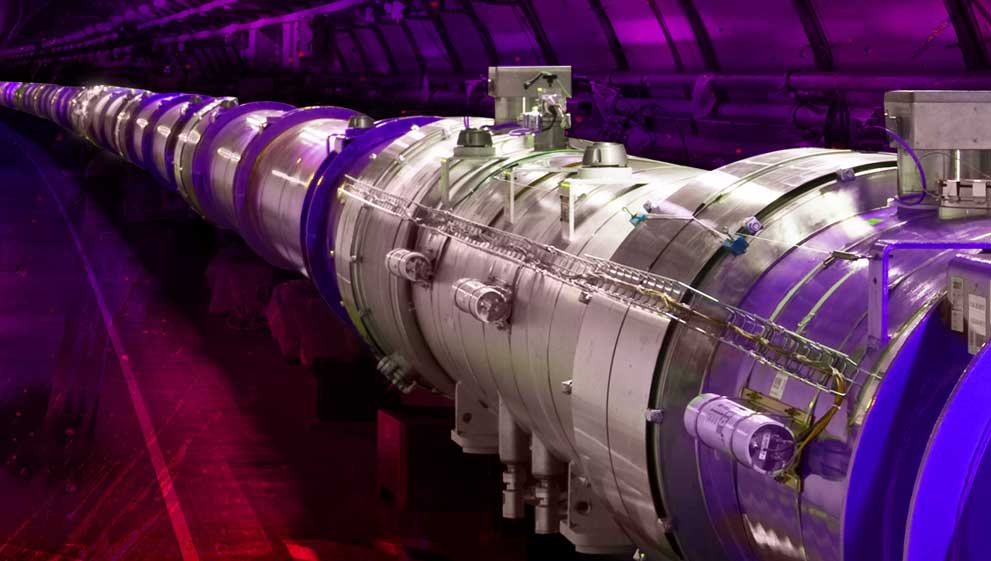Trillions of protons accelerate 11,245 times every second around the Large Hadron Collider (in CERN) accelerator ring at full power, or 99.9999991% the speed of light. Proton beams collide head-to-head at 14 TeV (tera-electron volts), with each beam travelling at a maximum energy of 7 TeV. Yes, that's fast... very fast... about as fast as you can get to the actual speed of light - which is 671 million miles per hour. Or to put it another way, a lot of points on your licence if you attempt it on the motorway.
The Large Hadron Collider was built by the European Organisation for Nuclear Research (CERN) between 1998 and 2008 in partnership with over 10,000 scientists and hundreds of universities and laboratories spanning more than 100 nations. It is located in a tunnel that is as deep as 175 metres (574 feet) and spans 27 kilometres (17 mi) beneath the French-Swiss border close to Geneva.
Stainless Steel has many applications in the construction of the LHC, including the high-precision stainless steel tubes used in the crucial cooling systems. CO2 is transferred through these cooling tubes, which retain their cooling capacity over long distances.
Recently CERN has been looking for dark photons. Dark photons, according to theoretical physicists, would be particles associated with dark matter. In non-sci-fi physics, dark matter is just a mystery speculative substance that emits no light but yet has gravitational effects, or appears to have them. It is neither a weapon nor a fuel for warp drives!
Our Stainless Steel Laboratory Sinks would be perfect for CERN, and any other laboratory environment. Cue a science joke... An electron and a proton are drinking in a bar. Proton: "Your round." Electron: "Are you sure?" Proton: "I'm positive."
And why not check out some of our other interesting Stainless Steel posts:
